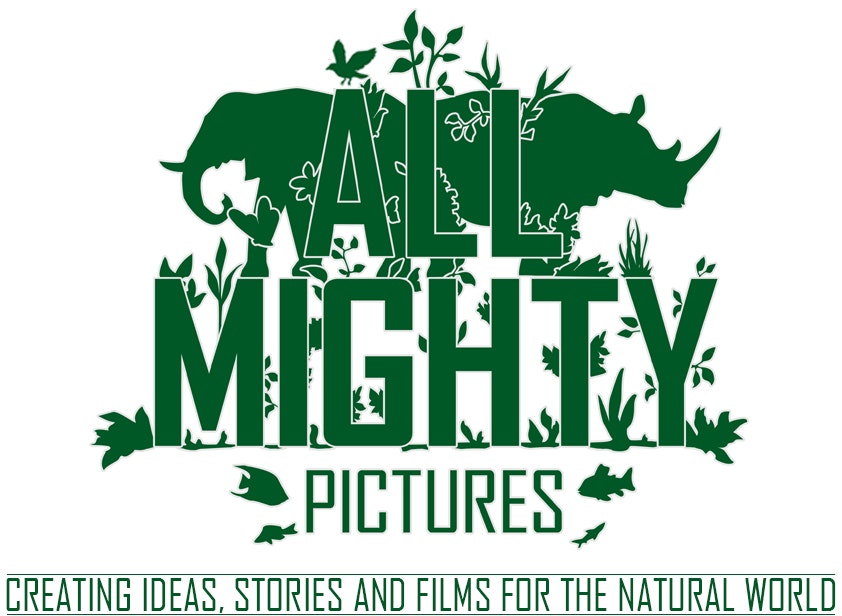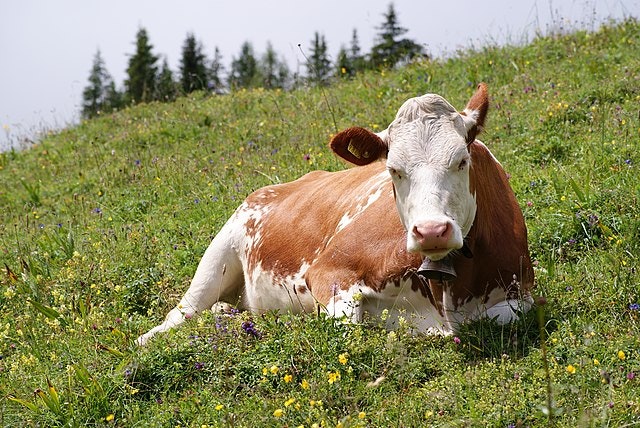Cover image: Wikimedia Commons
We were very keen to write a blog that provided clear explanations for the various animal welfare terms used on food labelling. There seems to be an insane amount of choices when trying to shop for meat from responsible sources. We hoped to tap government resources to list definitive meanings for the UK. For example, how much space and enrichment does a pig require by law to be deemed Free-Range? How many months per year does an animal legally need to graze to be termed Grass Fed?
This proved to be a much harder task than anticipated. We found no easily accessible information from the government that defines such terms for consumers. And trawling through the information provided for farmers was no mean feat, and didn’t always give us the answers we were looking for. All extremely unhelpful, especially when making on-the-spot decisions whilst shopping.
Buying meat from responsible sources is not only healthier for us, but also for our planet. Intensive farming practices release concentrated methane into the atmosphere and are a breeding ground for pathogens. They also cause untold misery for the animals living in them.
So how can we shop more responsibly when there is such a plethora of ‘ethical’ labels to choose from? With some seemingly designed to purposely mislead us by implying a life of relative freedom that, in practice, doesn’t exist.
The Department for Environment, Food and Rural Affairs (DEFRA) received strong calls from the public in 2021, with 84,000 signatures submitted from supporters of the charity Compassion in World Farming, for more transparency and consistency within food labelling in regards to animal welfare. The demand was to include not only the way in which the animal was raised, but also the method of slaughter. This would, in effect, allow consumers to reward higher welfare farming standards; particularly important for meat imported from countries that lack the same basic welfare standards as the UK. However, despite DEFRA publishing a ‘Summary of Responses’ in 2022, this year it disappointingly reneged on its announcement that it would consult on mandatory animal welfare labelling.
So, to save you the task of trawling the internet to better understand these terms, here’s the information we’ve found. We’d be pleased to hear back if we’ve missed anything, or made any errors, as we all just want the ability to make more informed choices. In light of that, here’s our attempted definitive guide to animal welfare labelling. We’ve included links to the information sources, which you’ll see are mostly from animal welfare organisations, the Soil Association, news sources and even the farmers themselves, with very little from the government.
We believe that the Soil Association, Organic, and Pasture for Life labels offer the best evidence of higher animal welfare practices. As for the rest, although we applaud the RSPCA and farmers whose practices favour the higher welfare end of these labelling terms, having such ambiguity within these farming methods makes it all feel a little hit and miss for us.
SOIL ASSOCIATION:
Has the highest standards of animal welfare within the ‘Organic’ mould. They are a charity who campaign for change, driven by the need for higher welfare farming and care for the natural world. The main benefits of their agroecological approach strives to mitigate climate change, manage the impact of farming on wildlife and give local farmers the ability to farm in a way that suits their community. (Sources here and here)
ORGANIC:
Chicken - Lower stock density than free-range. Indoors 21kg/m2, outdoors at least 4m2 per bird with vegetation cover. Daily access to the outside for at least a third of their lives. Must be at least 81 days old before slaughter. (Sources here and here)
Milk - Cows are outside as much as possible with access to pasture and plenty of space. They are not routinely injected with antibiotics and wormers - only when necessary. Must be fed a natural and organic diet, with a minimum of 60% grass forage. The use of milk processing aids and additives is heavily restricted. (Source here)
Beef - Legally the cows must be at pasture whenever conditions allow. When indoors they must be kept in spacious yards with deep bedding. Fed on a natural, organic diet with a minimum of 60% foraging. (Source here)
Pork - Pigs can roam freely their entire lives between indoor and outdoor straw-bedded shelters. Kept within family groups. Piglets are weaned at a minimum of 40 days. Allowed to forage on a natural diet with the use of GM foods completely banned. They are allowed to be kept indoors in extreme weather conditions but must have deep straw beds and access to an outdoor run. No tail docking, ear tagging, teeth cutting or nose rings. (Sources here and here)
Lamb - Implemented grazing systems that reduce the risk of disease and worms in lambs as the use of antibiotics and wormers are banned from routine use. Allowed to keep their horns and tails. No use of chemical pesticide dips. When housed, they must have a dry well-bedded area, and wire-mesh or slats must not exceed half of the floor area. Organic milk must be used for bottle-fed lambs. Mostly fed on pasture grass and organic feed. (Sources here and here)
PASTURE FOR LIFE:
Milk, Beef and Lamb - Pasture for Life is a scheme that assures high animal welfare conditions from its certified farmers. The carbon footprint of grass farms are lower than those farms that use cereal crops to feed their animals. They prohibit the use of soya based feeds. Pasture farmers sow legumes, such as red and white clover, that act as natural pesticides. When indoors, the animals are fed dried or pickled grass. Pasture for Life’s labelling includes a QR code that you can scan to find out detailed information about the origin of the meat you’ve purchased. (Source here)
GRASS FED, PASTURE FED, 100% GRASS FED:
Milk, Beef and Lamb - There is no legal definition of Grass or Pasture Fed, only that animals are eating grass for a minimum of half of the time, along with grain. Labels that state 100% grass fed means that the animal is grazed unless they are indoors where they are fed hay (dried grass), or silage (fermented grass). (Sources here and here)
RSPCA ASSURED:
For meat to be labelled RSPCA Assured, doesn’t necessarily mean the animal had a life of relative freedom. Assurances include such things as no cages for hens or sows, indoor reared animals have some kind of basic enrichment and are able to move around, and that slaughtering methods are deemed humane. However, there have been reported incidents where RSPCA assured intensive farms have not been properly monitored for their animal welfare standards. (Sources here and here)
FREE RANGE:
Eggs - Each chicken must have access to the minimum of 4m2 of outdoor space during daylight hours. Indoor spaces can have up to nine birds per 1m2. According to DEFRA, beak trimming is allowed. (Sources here and here)
Broiler chickens - No more than thirteen birds per M2 of outdoor space for at least half of their lives. Must be 56 days old before slaughter. (Sources here and here)
Milk - Over twelve-months of age cows must be grazed for a minimum of 180 days per year. Only away from pasture for milking. (Source here)
Beef, Pork and Lamb - Unlike eggs, poultry and milk, there is no legal definition of free-range in regard to pigs, cows or sheep bred for their meat. Although it does usually mean that they spend a part of the year outside. (Sources here and here)
OUTDOOR BRED:
Pork - Pigs are born outside, but when weened at 4 weeks of age will be moved indoors. Unless the labelling states RSPCA Assured, the young pigs will more than likely be moved to intensive farms. However, the breeding sows are free to roam from indoor to outdoor areas, but of no specific size, with a straw-bedded arch for shelter, and are never confined to farrowing crates. They may or may not have access to pasture. (Source here)
OUTDOOR REARED:
Pork - The only difference between Outdoor Bred and Outdoor Reared, is that the piglets are weened at 10 weeks of age - approximately half of their lives before slaughter - before being moved indoors. (Source here)
RED TRACTOR ENHANCED WELFARE - not to be confused with RED TRACTOR:
Red Tractor Enhanced Welfare have only adopted some of the RSPCA’s key welfare standards. They haven’t adopted the standards for transportation and slaughter. For their intensively farmed chickens they provide natural light and basic enrichments to encourage natural behaviours such as wing flapping and pecking. They also have a reduction in the amount of bird density per barn, reduced from 38kg/m2 to 30kg/m2. (Sources here and here)
RED TRACTOR: Don’t be fooled by Red Tractor labelling. It offers very little above the minimum legal UK farming requirements, with high intensive-farm stocking density, sows kept in farrowing crates and practices such as tail and teeth clipping without anaesthetic. Investigations have proven a lack of farm monitoring, with farms breaking the Red Tractor standards. (Sources here and here)
Visit Compassion in World Farming's website HERE to ask the Secretary of State at DEFRA to reinstate the promised consultation on honest food labelling.
To find out more about the cruel practices within intensive farming, visit Mercy for Animals website HERE.

